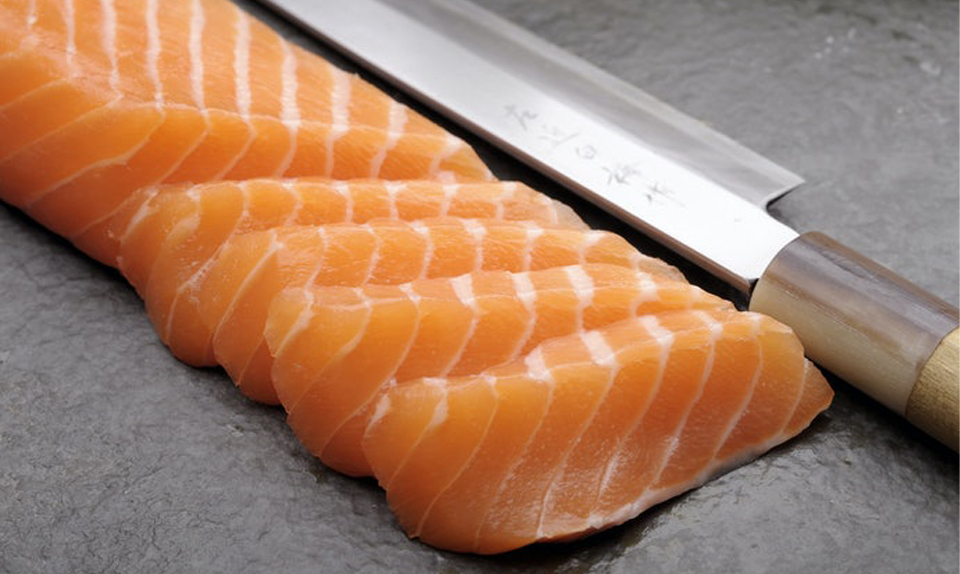In the culinary arts as well as in food culture, one cannot overlook the sophistication of Japanese cuisine - especially the meticulous preparation of fresh seafood dishes known as Sashimi. To create such intricate and aesthetically refined dishes, a specialized set of knives is required - these are the Sashimi knives.
To craft delicious and visually appealing dishes, a skilled and talented chef is essential. Equally important is the knife, which is the core tool that brings perfection to the plate and serves the customer. Japanese chefs use knives that differ significantly from their Western counterparts: while Western knives often have double-edged blades, Japanese kitchen knives typically have a single-edged blade.
This distinction contributes greatly to the unique character of Japanese cuisine. Japanese knives come in various types, and chefs in Japan usually own a personal set—or even two sets—of Japanese knives for alternating use. For these chefs, the knife is not just a cutting tool; it represents life, joy, pride, and a deep respect for the ingredients they prepare.
Sashimi Knife
For fresh and delicious sashimi, the sashimi knife is the core element in creating the dish. With fresh ingredients, the knife must be razor-sharp to slice clean and beautiful pieces of sashimi.

The Yanagi knife line is specifically used for slicing sashimi.
Just like with salmon sashimi, creating this dish requires making a single, decisive slicing motion to ensure the surface of the fish remains smooth and unbroken. A rough or jagged cut would compromise the freshness of the fish. When dipped in soy sauce, a cleanly sliced piece will absorb just the right amount, preserving the delicate flavo - whereas a poorly cut piece might soak up too much and become overly salty. The sharper the knife, the sweeter and more refined the taste of the salmon.
The sophistication of Japanese cuisine places a high emphasis on visual aesthetics. That’s why chefs must possess refined technique and use an extremely sharp set of Japanese knives to create such culinary masterpieces.
Types Of Japanese Sashimi Knives
Among Japanese sashimi knives, there are three distinct types: Fuguhiki, Takohiki, and Yanagiba.
-
The Yanagiba knife is similar to the Western-style carving knife and is used for slicing all types of fish.
.jpg)
Yanagiba
.jpg)
Fuguhiki
.jpg)
Takohiki
-
Sashimi knives used by Japanese chefs are always carefully maintained and meticulously cared for. Each chef typically owns one or two sets of knives for alternating use. After each use, the knives are sharpened and then allowed to “rest” for one or two days. This practice helps preserve their shine, sharpness, and also removes any lingering food odors.
.jpg)
Yanagi
-
Sashimi knives are made from exceptionally high-quality steel. What sets them apart from other knives on the market—especially Western knives—is that they have a single-bevel edge, unlike the double-bevel edge commonly found in Western-style knives. This distinction gives sashimi knives superior sharpness and allows for extremely precise cuts.
The blade is hardened and extremely sharp, with high resistance to friction, which helps prevent food from sticking during use. The handle is made of wood, featuring an anti-slip and stain-resistant coating—making it both durable and elegant. Each Japanese sashimi knife is often engraved with the name of its maker, serving as a signature mark of craftsmanship.
Japanese culture is rich and fascinating. Hopefully, this article on sashimi knives has provided you with some valuable insights into the culinary traditions of Japan.